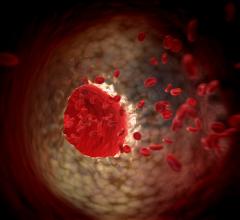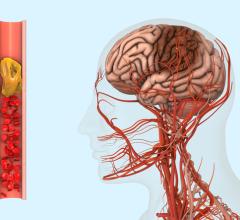
November 18, 2021 — Village doctors who were community health workers in rural China were trained and successfully treated people with uncontrolled high blood pressure in 326 villages using a standard protocol and health coaching, resulting in over half of the people in the intervention group reaching normal blood pressure levels (<130/80 mm Hg) within 18 months, according to late-breaking research presented at the American Heart Association’s Scientific Sessions 2021.
High blood pressure is a leading, preventable risk factor for heart attack and stroke. According to the World Health Organization, more than 270 million people in China have high blood pressure; less than 14% of those have their condition under control. Uncontrolled high blood pressure is prevalent in low- and middle-income areas worldwide.
“The breakdown of people in China with controlled blood pressure under 140/90 mm Hg was 10.1% in urban areas and 5.5% in rural communities in 2014, and not everyone who has hypertension can access treatment,” said lead study author Jiang He, M.D., Ph.D., the Joseph S. Copes chair and professor of epidemiology and the director of the Translational Science Institute at Tulane University in New Orleans. “To address the lack of access to care, we considered that a non-physician, health worker-led intervention may be more feasible and sustainable in low-resource settings, so our team tested the effectiveness of a blood-pressure intervention program in rural China led by community health workers known as village doctors.”
The study included nearly 34,000 adults, ages 40 years and older, in 326 villages in three provinces in rural China. The study participants included people with either blood pressure levels 140/90 mm Hg or higher who were not being treated when the study began; people with blood pressure levels 130/80 mm Hg or higher who were taking blood pressure medication; or people with blood pressure levels 130/80 mm Hg or higher who also had a history of clinical cardiovascular disease.
The study villages were randomly assigned to a village doctor-led intervention program or no intervention (usual care). People in half of the villages (16,588 adults; mean age of 63.2 years; 61.6% women) received their usual care for high blood pressure by their regular health care providers. Those in the other 163 villages (17,407 adults; mean age of 62.8 years; 60.9% women) received the village doctor-led intervention.
Community health workers, known as “village doctors,” treated patients with hypertension using a simple, standard protocol that included regularly measuring and adjusting high blood pressure medications, along with offering health coaching on home blood pressure monitoring, lifestyle changes and medication adherence. The village doctors, most of whom had minimal formal medical training, were supported and supervised by primary care physicians and hypertension specialists.
For the intervention group, village doctors received training on standard blood pressure measurement, protocol-based antihypertensive treatment and health coaching. The village doctors also received performance-based financial incentives based on the proportion of their patients with controlled blood pressure. Financial incentives varied and were decided by local primary care physicians who supervised the village doctors
Adults with high blood pressure in the intervention group were provided with home blood pressure monitors and trained on how to check their blood pressure levels at home. They received monthly health coaching in the first six months and then coaching every three months. The coaching included information on the risks of high blood pressure and lifestyle changes, as well as motivation and methods on taking their medication routinely, as prescribed. They were also encouraged to regularly communicate with their village doctor.
After 18 months, researchers compared blood pressure levels between the two groups and discovered:
- A total of 57% of adults in the intervention group had blood pressure levels lower than 130/80 mm Hg, compared to 20% in the usual care group, while 77% of participants in the intervention group had blood pressure levels lower than 140/90 mm Hg, compared to 45% in the group who received usual care.
- Systolic and diastolic blood pressure levels were reduced 26.3 mm Hg and 14.6 mm Hg, respectively, from baseline to 18 months in the intervention group, compared to an average decrease of only 11.8 mm Hg for systolic blood pressure and 7.5 mm Hg for diastolic blood pressure in the usual care group.
“The magnitude of blood pressure reduction in the patients who were in the intervention group is quite impressive,” he said. “These results indicate the village doctor-led intervention was effective and is a feasible and sustainable implementation strategy that could be scaled up to achieve more intensive blood pressure control among people with hypertension in rural China and other low- and middle-income countries with limited health care access.”
Co-authors are Yingxian Sun, M.D., Ph.D.; Jianjun Mu, M.D., Ph.D.; Daowen Wang, M.D., Ph.D.; Nanxiang Ouyang, M.D.; Liying Xing, Ph.D.; Xiaofan Guo, M.D., Ph.D.; Chunxia Zhao, M.D., Ph.D.; Guocheng Ren, M.D.; Ning Ye, M.D., Ph.D.; Ying Zhou, M.D.; Jun Wang, M.D.; Zhao Li, M.D., Ph.D.; Guozhe Sun, M.D., Ph.D.; and Ruihai Yang, B.M. Authors’ disclosures are listed in the abstract.
The Ministry of Science and Technology of China provided funding for the study. U.S.-based investigators did not receive funding.


 July 24, 2024
July 24, 2024 








